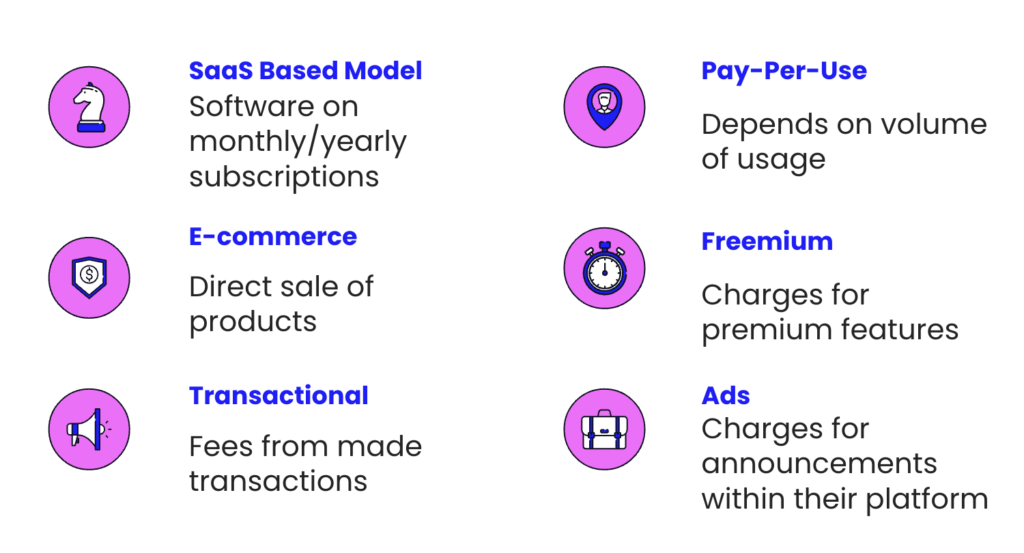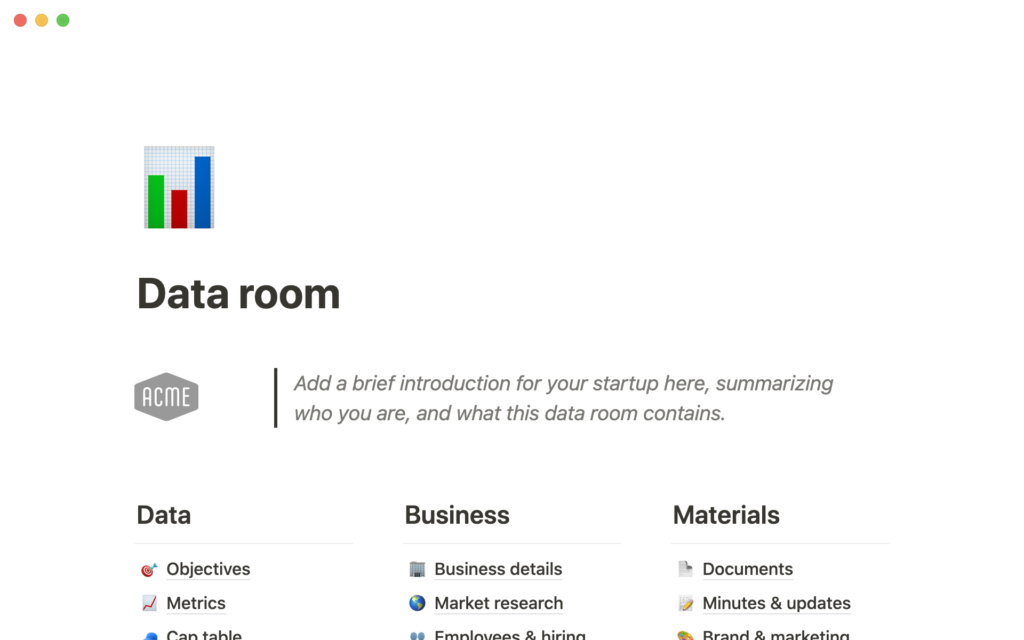THE IDENTIFICATION OF RELEVANT METRICS
Navigating startup metrics
Find out how to detect which metrics are most important for your type of business and how to improve them


Hello, entrepreneurs!
In a previous edition, we talked to Clemente López, director of our acceleration programme, about the importance of financial control in early stage startups and its relevance to be able to make strategic decisions that have a direct impact on the business.
Once we understand how we can have control over the cash flow of our business, it is important to start identifying the levers of growth. That is, those metrics that are most relevant to our type of business, what they mean in the context of our vertical and what specific actions we can take to improve them.
What is my business model? Do I have more than one?
In order to improve my business, I must first understand it. In order to identify areas for improvement, I must know what I am looking to improve.
In the speed of the entrepreneurial ecosystem, it is very easy to skip definitions that may be important to make our journey more concrete. That is why, before deciding what metrics I want to track and try to improve, I must understand what kind of business model I apply to my business. The aim is to be able to focus efforts on what will really have an impact on the business and what will make sense in the context of the startup.
Some companies will have more than one business model or vertical and it is important to be able to measure each one with the appropriate metrics in order to take the relevant improvement actions.
In general, the business models that startups implement are usually one or some combination of the following:
- SaaS (Software as a Service): In this business model, companies offer software to customers on a regular subscription basis. This provides them with continuous access to the latest updates and features, often at a lower cost than buying a permanent licence.
- E-commerce: E-commerce involves the sale of products or services through online platforms. Customers can make purchases directly from the comfort of their homes, offering convenience and a wide selection of products.
- Transactional: This business model focuses on facilitating financial transactions between buyers and sellers. This may include payment platforms, money transfer services or online booking systems.
- Freemium: In the freemium model, companies offer a basic version of their product for free, with the option to pay for additional features or a premium version. This allows users to try the product before committing to purchase.
- Pay-per-use: In this model, customers pay only for the use or consumption of the product or service. This may include cloud storage services, streaming music apps or equipment rental.
OK, I know my business model(s). Now, what should I measure?
As we saw in the previous article, there are metrics, especially those related to finance, that are transversal to all startups. Having control over our expenses, runway and a clear P&L structure will be fundamental for any company.
However, there are also metrics that relate to each type of business model, and that help to cohere and translate what is really going on, based on the context. Some of the most important metrics are:
- SaaS:
- MRR (Monthly Recurring Revenue): monthly recurring revenue.
- ARR (Annual Recurring Revenue): annual recurring revenue.
- LTV (Lifetime Value): customer lifetime value.
- CAC (Customer Acquisition Cost): acquisition cost per customer.
- E-commerce:
- Revenue: total revenue generated by sales.
- GMV (Gross Merchandise Value): total value of products sold.
- Conversion Rate: conversion rate of visitors to buyers.
- Cart Abandonment Rate: cart abandonment rate.
- Transactional:
- Revenue: total revenue generated by transactions.
- GMV (Gross Merchandise Value): total value of transactions.
- Burn Rate: capital consumption rate.
- Runway: period of time before funds are exhausted.
- Freemium:
- MRR (Monthly Recurring Revenue): Monthly recurring revenue.
- ARR (Annual Recurring Revenue): Annual recurring revenue.
- Conversion Rate from Free to Paid: conversion rate from free to paid users.
- Engagement Metrics: engagement metrics (e.g. time spent).
- Pay-per-use:
- Revenue: revenue generated by the use of the product or service.
- LTV (Lifetime Value): customer lifetime value.
- CAC (Customer Acquisition Cost): acquisition cost per customer.
- Burn Rate: capital consumption rate.

Great, I have my metrics. What are they good for?
Once I have recognised the most relevant KPIs for my business, it is time to execute specific levers for each of the cases in which I would like to improve. Here are some examples:
- SaaS: Imagine you have a startup that offers project management software. To increase your MRR and ARR, you can improve customer retention through regular updates and exceptional customer service.
- E-commerce: Let’s say you have an online shop for beauty products. To increase your revenue, you can optimise your website for better conversion and reduce cart abandonment rate through purchase reminders or discounts.
- Transactional: Let’s say you have a restaurant reservation platform. To increase your revenue, you could offer special offers or promotions to incentivise more bookings and at the same time control your burn rate to ensure financial sustainability.
- Freemium: Imagine you have developed a productivity app with a free version and a premium version. To convert more free users into paying users, you could offer a free trial of the premium version and show the added value it offers.
- Pay-per-use: Let’s say you have a cloud storage service where users pay for the amount of data they use. To increase your revenue, you could offer flexible pricing plans and additional storage options.
Metrics management: taking your startup to the next level
Once you have identified the key metrics for your startup, the next crucial step is to manage them effectively. An invaluable tool for this is a Data Room, a centralised platform where you can store, organise and share financial and operational data with partners, investors and other stakeholders.
What is a Data Room and why is it important?
A Data Room is a secure online repository where you can store and share your company’s confidential documents and data. It is an essential tool for metrics management because it provides a centralised place to store critical information and allows secure access to real-time data.
Key functionalities of a Data Room
- Organisation: With a Data Room you can organise your metrics in a logical and structured way, making it easy to search and retrieve data when needed. You can create folders and sub-folders for each type of metric and maintain a clear and orderly structure.
- Collaboration: Data Rooms enable collaboration between teams, partners and external advisors by facilitating the secure exchange of information. You can invite specific people to view or edit certain documents, encouraging collaboration and informed decision-making.
- Auditing and tracking: With activity tracking capabilities, you can see who has accessed data, what documents they have viewed and when they have viewed them. This provides an additional layer of security and transparency, as well as a complete audit trail for compliance and review purposes.

Example of the use of a Data Room
Imagine you are in discussions with a potential investor interested in funding your startup. Before committing, you want to review your financial and operational metrics to assess your company’s performance and growth potential.
Instead of sending a mountain of documents via email or sharing files through insecure platforms, you decide to create a dedicated Data Room for the investor. You organise your key financial metrics, such as MRR, ARR, LTV and CAC, in separate folders and grant them secure access through the platform.
The investor can easily review your metrics in real time, ask specific questions and get a complete understanding of your company’s performance. In addition, thanks to activity tracking features, you can see when the investor accessed the data and which metrics they reviewed, allowing you to customise your presentation and track trading progress.
In short, a Data Room is an invaluable tool for metrics management in a startup, providing security, organisation, collaboration and tracking to ensure the long-term success of your company. Here is one of the DataRoom templates we have used with some startups at Bcombinator.
Managing key metrics is critical to making informed decisions and driving growth and profitability. A Data Room provides you with the infrastructure to securely and efficiently store, organise and share your metrics, allowing you to keep your partners, investors and other stakeholders informed and engaged in your company’s success. Integrating a Data Room into your metrics management strategy is a crucial step in taking your startup to the next level.
Well, entrepreneurs, we have come to the end of this article and I hope it has helped you to understand the importance of metrics and business control and to discover some ideas on how you can manage this in a simpler way. If you want to contact us, do it through this link.
See you in a new article!
